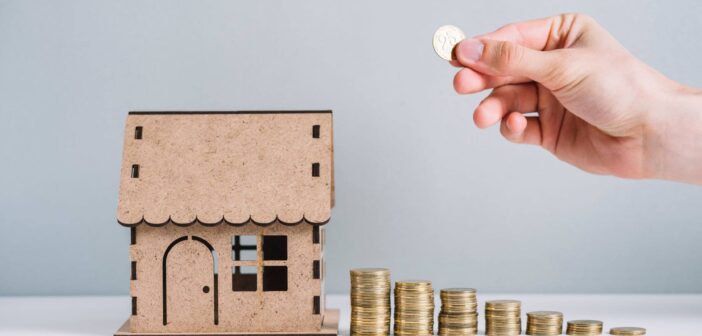While the pandemic Covid-19 had hovered like a black swan for the economy in general and the real estate market in particular, the developers across the country also woke up to the unexpected but pleasant reality that the client conversion rate had improved post the pandemic. A Track2Realty analysis.
Post lockdown when the sector had resigned to the lowest possible expectation with the highest value product in real estate, the footfalls were naturally between 35-40% of the pre Covid level. However, the lesser footfall had not dented their fortunes because the transaction rate or the strike rate had improved substantially.
This silver lining was not only encouraging for the sector but had also been catalyst to lower marketing cost and even lower manpower cost at a time when the focus was more to avoid the open house invitations. Most of the developers admit that earlier if the conversion rate was 3-4 buyers committing to sales with 100 odd leads and site visits, the post pandemic scenario was the same number of buyers out of only 40 odd leads and site visits.
Even the property brokers having hard time to differentiate between the serious buyers and non-serious buyers were surprised with the much improved quality of leads in the business. One logical answer to this could be assigned to the fact that digital engagement had increased substantially and only the serious buyers with an intention to buy were coming forward to the site visit. The window shoppers and even those on the lookout for property to be bought at a later stage preferred to stay at home.
Catalysts to higher conversion rate
Footfall 35-40% down but conversion rate double the pre-Covid level
No window shopping in the housing market; only serious buyers out on site visit
Better quality of leads equals lower cost of conversion and higher conversion rate
For the buyers, lower interest rates & PMAY benefits reduces interest rates to near about rental returns
Price rationalisation in terms of all-inclusive deals and/or feature loaded offers
For the builders, reduced marketing cost & higher conversion amounts to 1-2% increase in the top line
Subhankar Mitra, Managing Director, Advisory Services at Colliers International India believes there are several drivers for this early turnaround and higher sales conversion. The pent-up demand being one of the major reasons. Some buyers realised that work from home is here to stay and thus prompted them to hasten their purchase. There were other benefits too. The home loan rates are now at an all-time low. The top five banks of India are offering home loans between 6.9% to 8.5%, to both the salaried and self-employed persons. This coupled with the interest subsidy under PMAY can bring the effective interest rate below 5%, which is marginally higher than residential rental yield of 3%-4%.
“For certain types of properties the rental amount can pay for the interest part of the loan, which was not possible even a year before. In addition to that some state government provided discounts on stamp duty and registration. In many cases, the builders bore the small percentage and made a “Lumpsum” all-inclusive offer to the buyers which was received well. The festive season also contributed to the momentum. Many developers reported that even the millennials are back as buyers who were largely missing in recent times,” believes Mitra.
Sobha MD & VC, JC Sharma is of the opinion that while the pandemic has kept us indoors, there are a lot of people who have realized the need and importance of owning a home of their own. Working from home and the influx of NRIs planning to settle down in their homeland or as a future investment, have also made way for serious buyers. Realizing the importance of owning one’s own home and the lucrative deal customized for buyers by the builders have also helped.
“Smarter, cost-effective ways of reaching out to our audience digitally have been the core strategy behind reducing the overall marketing cost. We focus on selling right products at the right price points and a large number of our deals fructify due to referrals and by the word-of-mouth selling and repeat customers. This helps us keep the marketing costs low. We tend to rely less on heavy advertising led marketing which has its own flip side,” says Sharma.
Amit Modi, Director of ABA Corp says that the higher client conversion can surely be attributed to multiple factors, but the underlining cause can be that at the start of the pandemic there was no clarity in terms of way forward. Fortunately, the world now has learnt to live with the pandemic and initial churning in terms of job losses & furloughs have reduced and to some extent turned into re-joining as well. Home buyer at large are in a much better position to now take call on the high value transactions like real estate investments, which can be seen on the ground as well.
“Other factors also include heavy correction in pricing, lowering of home loan interest rates etc which have encouraged the fence sitting buyers to take a plunge on basis of now or never opportunity. The buyer is now more spoilt for choice than ever before and at the same time choosy as well, hence there is bigger demand for ready to move in properties, feature rich housing or anything else that give a value for money satisfaction and security to the home buyer,” says Modi.
It would be logical to note that the spend towards the marketing and promotion dried up post the pandemic. Usually marketing cost is pegged between 4-6% of the product price. When the corresponding sales volume grows up by 20-30% with reduced marketing cost then incremental savings is about 1-2% of the top line. There has been more emphasis on digital marketing and social media where the cost is lesser and often directly proportionate to the sales volume. In the final cost & benefit analysis, the developers are in an advantageous position with better quality of leads, lower cost of conversion but higher conversion rate.
Ravi Sinha
@ravitrack2media
Track2Realty is an independent media group managed by a consortium of journalists. Starting as the first e-newspaper in the Indian real estate sector in 2011, the group has today evolved as a think-tank on the sector with specialized research reports and rating & ranking. We are editorially independent and free from commercial bias and/or influenced by investors or shareholders. Our editorial team has no clash of interest in practicing high quality journalism that is free, frank & fearless.
Subscribe our YouTube Channel @ https://bit.ly/2tDugGl





